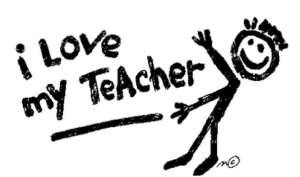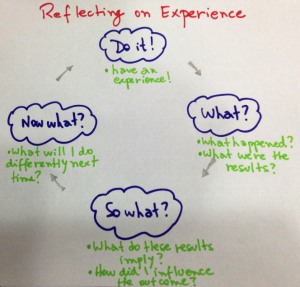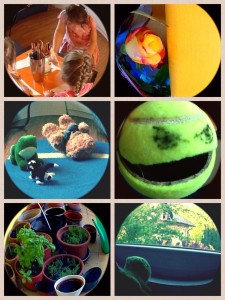Click on any of the thumbnails to view the posts.
 John F. Fanselow |
 Erika Osváth |
 Chiyuki Yanase |
 Kevin Stein |
 Malu Sciamarelli |
 Nina Septina |
Click on any of the thumbnails to view the posts.
 John F. Fanselow |
 Erika Osváth |
 Chiyuki Yanase |
 Kevin Stein |
 Malu Sciamarelli |
 Nina Septina |

As teachers we are in the change business. Yet, as many of us know very well, change is not always easy. Inertia can be a powerful force and it can become all too easy to get stuck no matter how much we believe change is desirable.
One book that has greatly affected the way I think about change is Switch: How to Change Things When Change is Hard by brothers Chip and Dan Heath.
I found this book as easy to read, powerful and memorable as it was insightful, and would strongly recommend it to pretty much anyone — especially teachers interested in creating change in themselves, their students, their institutions, and their world. There are several ideas from the book that greatly appeal to me.
One is that when trying to encourage change we need to find the bright spots. This means we need to find cases or situations where things are working and use these to guide our changes. Instead of focusing on a faraway, long-range, and abstract goal we can found out what is working right now in our classrooms and staffrooms and start from there. Having a local model in a similar situation is a great way to work towards improving what we do. I should also mention that the bright spot need not be another person but could be one positive aspect of what the individual teacher or student is doing. I think in this field (and others as well) we often focus on what is wrong or what is lacking instead of thinking about what is going well. We can gain valuable information by analyzing what is working well and using this as a model and as a starting point. A great thing about focusing on the bright spots give some direction to the rider as well as a dose of motivation and hope to the elephant.
“Elephant? Rider? What?” I heard you asking.
A set of the Heath brothers’ concepts I found particularly helpful and useful are the Elephant and Rider. The idea here is that within each of us we have an elephant and a rider. The elephant is the emotional driving force ready to work hard and run powerfully all over the place. Unfortunately, the elephant easily loses motivation or directs its energy into something else. The rider is the analytical and rational part that is swayed by logic and reason but easily frozen by what we can consider “paralysis by analysis.” In order to exert change successfully we need to have both the elephant and the rider on board and engaged. So, if we are trying to help someone (or ourselves) make changes we need to appeal to both the elephant and the rider. It is not enough to get someone excited about ideas and convince them and their elephant that change is a good thing. We also need to appeal to the rider, the thinking and rational part. Likewise, the rider alone is not enough. We need both in tandem.
I personally find this metaphor very helpful. When I get all excited about an idea I say to myself that my elephant is interested but then when I start picking holes in it and allowing inertia to take hold, I say to myself that my rider needs some reassurance or has some questions or issues that need to be taken care of. Likewise if I see someone poking holes into what otherwise seems to me like a great idea I take this as a need to appeal to their rider. The authors of Switchsay that what seems like resistance on the part of the rider is often simply a lack of clarity, so I take this is a sign that I need to provide as clear as possible in order to assuage the doubts of the rider.
Shaping the path is another prominent idea in the book. This means that we want to create a situation in which change is as easy as possible in light of the challenges that riders and elephants face. Imagine creating a smooth path in the jungle so that both the elephant and the rider can see, choose and follow it. We want to remove obstacles to the behavior that we are aiming for. I see this as sort of eliminating things that might block us from making the changes we’d otherwise like to make.
How do these ideas relate to your own professional development or your involvement with ITDI? I think that is a question better left for you. I wish you the best of luck and would be happy to further discuss any of these ideas.
Read more work from Michael Griffin on his wonderful blog ELT Rants, Reviews, and Reflections.

December 2007, Sunday 4:30am: Slowly crawling out from the warmth of my bed, I saw my running kit and race bib patiently waiting. Smiling, I got up, dressed and went on to cross the finish line of my first 10k race in 67 minutes. Not bad for a beginner!
Looking back, I saw how it all started: jogging around the block without coughing up a lung, doing research, hiring a personal trainer and eating healthy food. My sights were set high despite warnings from doctors after my previous serious illness: I wanted to run street races! The feeling of accomplishment from that first race has motivated me to run 20 more.
 After every training or race, I was so motivated, and I tried to pass this on to my students, sometimes with mixed success. Motivation is essential for learning, but it has different meanings for different people and should be developed not forced.
After every training or race, I was so motivated, and I tried to pass this on to my students, sometimes with mixed success. Motivation is essential for learning, but it has different meanings for different people and should be developed not forced.
I thought about my first run and my motivation. Three questions popped up:
– Why people decide to do something,
– How hard they are going to pursue it and
– How long they are willing to sustain that activity.
I thought about the Motivational Running techniques that broke my barriers – I can’t run – and which limited my real ability, and thought about a common student barrier – I can’t learn English. Would the same strategy work? In the classroom, I converted running techniques to learning techniques, as follows:
1. Set goals
In running, you set goals to monitor your progress and with each success your enthusiasm for running soars. Remember:
– Have specific deadlines;
– set realistic but challenging goals;
– write and review your goals.
With my groups, we create a contract with specific learning goals to be followed during the course, and post it on the classroom wall.
2. Utilize a log
A log helps to keep you on track and allows progress monitoring. Runners regularly review their training logs and gain motivation.
In my classroom, we have a learning diary, in which students are responsible for recording their progress individually and as a group.
3. Implement the buddy system
The Buddy system is a procedure in which two people operate together to monitor and help each other. Running with others provides accountability, builds friendships and provides mutual motivation on tough days.
My students have buddies and they operate by encouraging each other.
4. Surround yourself with reminders
Race photos and messages can sustain motivation.
In my classroom, sometimes students arrive and find post-its in different places with specific messages; occasionally the class starts with a video or simply with online posts.
5. Be creative with the process
Doing the same thing leads to boredom and burnout. In running, you can vary your workout routine.
Whenever possible, I try to start my classes in different places in school, such as the garden and move to the classroom. We do a variety of practical projects and enjoy background music.
6. Do more to boost your motivation
In my trainings or races, when I wanted to quit, I remembered a quote and that inevitably helped me.
Each student in my groups is responsible for finding a motivational quote that can be referred to in moments of difficulty. They are also encouraged to share experiences of using English outside the classroom.
7. Occasionally enter a competition
In running, if you want to increase your motivation and feel competitive adrenaline, you must enter the occasional race. The spillover excitement motivates you afterwards to try more races.
Within my groups, we create events, such as workshops, project presentations, theatre role-plays and student judges give “peer feedback”.
8. Reward your successes
In running, rewards can be a powerful motivator. When you succeed, you do something nice for yourself, such as a meal at a nice restaurant – any idea is great, as long as you follow the bottom line “be good to yourself”.
In learning, although intrinsic motivation is hindered by tangible rewards that control, I believe motivation is related to enjoyment, vitality and self-esteem. So, by rewarding success in unexpected ways, it need not be seen as controlling.

By following these steps, my students are able to create motivational conditions, where they have a pleasant and supportive atmosphere in the classroom; they can help each other generate initial motivation, increasing their expectancy of success; they can maintain motivation by making learning stimulating and increase their self-confidence to breakdown self-imposed barriers. At the end of each class, I and the students always reflect using the Reflective Learning Cycle (Thornbury S. and Watkins P.), in which they can see their learning in a motivational, personal and meaningful way.
At the end of each class, I and the students always reflect using the Reflective Learning Cycle (Thornbury S. and Watkins P.), in which they can see their learning in a motivational, personal and meaningful way.
How about us, teachers? What do you believe motivates us? We may have different answers, but for me, it’s when my passion to teach is caught by my students. – Malu Sciamarelli
Malu has been working in Brazil for 20 years as an English teacher, materials designer, translator and consultant for publishers. She has taught in schools, language institutes and in companies, where she has developed a new concept of ELT in the workplace. She’s passionate about teaching. She believes teachers can affect how students perceive the world around them; they can ignite a spark of curiosity and help them develop their own creativity; they can help them overcome fears, express themselves, initiate ideas, plans, actions and a desire for lifelong learning. She’s also an enthusiastic runner and she loves dogs. Website: malusciamarelli.com

Photography and gratitude are two practices I have come to see as inevitably intertwined and necessary in my life. They compliment each other in the sense that they are both based on beauty and celebrating life. They have given me the ability to look at the world through the eyes of wonder.
This is something I used to do easily until one day realize I had lost it. How do you lose this ability? For me it started seeping away when I began taking life much too seriously. I only became aware of this after months of being in what I called “a funk”. This isn’t the funky kind of funk. This is the kind of funk that brings you and the people around you down. Funk also found me in the classroom. Life got a bit too discouraging, and so did my outlook on education.
Trying to get myself out of this funk, I spent some of my free time listening to Tara Brach’s podcasts. Her teachings on mindfulness are insightful, humorous and practical. In her podcast “1000 serious moves” it seemed like she was speaking directly to me. She explored ways to help people see life with greater lightness. One of the ways was to find a gratitude partner. The concept is simple: email a friend every night with 5 things you are grateful for. Intellectually understanding how gratitude could brighten up my life, I emailed my dear friend Anne Hendler (check out her insightful reflections on learning and teaching at Living Learning) to see if she wanted to embark on this journey with me. We’ve now been gratitude buddies since September 2012, emailing each other with five moments of gratitude almost everyday. Here was in one of my latest gratitude lists:
My intellectual understanding of this practice has now turned into a deeper understanding. Gratitude has led me to seeing things with greater lightness. Objects and moments I once passed without notice now become objects of curiosity. Through the lens of gratitude everything shines brighter. However, this isn’t only a metaphorical lens.
“Gratitude unlocks the fullness of life. It turns what we have into enough, and more. It turns denial into acceptance, chaos to order, confusion to clarity. It can turn a meal into a feast, a house into a home, a stranger into a friend.” – Melody Beattie
I also see this gratitude through my camera’s lens. Most of my photography is based on seeing the beauty in ordinary, simple moments: fallen autumn leaves or cherry blossom petals; abandoned shoes; stray cats; sunbeams on brick walls. I may be walking to the subway, and a strange shape or bright color catches my eye. Or I may be walking through campus and the yellow gingko trees beg for me to capture them. When I take a closer look at what at first glance may seem unexceptional, I find quite the opposite. Through my view screen, I see magic.

Gratitude has a similar magical quality. When each day you have to find five things that you are grateful for, you start being surprised at all the magic that is already in your life. The more gratitude I explore, the more it comes out in my photography. The more beauty I see through my viewfinder, the more gratitude I have.
It’s hard to pinpoint how all this has directly affected my teaching, but one thing I sense is that a teacher filled with lightness must be easier to connect with than a teacher filled with darkness. I feel grateful to see glimpses of this lightness. To see see some of this gratitude for yourself, check out my personal blog, Private Mixture, or find me on Instagram. – Josette Leblanc
Josette LeBlanc is an English language teacher and teacher trainer who currently teaches in Daegu, South Korea. She’s curious about reflective practice, compassionate communication, and teacher development done both online and offline. She believes learning, whether it happens in or out of the classroom, is a process of discovery and transformation. Read more work from Josette on her always wonderful blog Throwing Back Tokens
Connect with Josette and other iTDi Mentors, Associates, and Faculty by joining the iTDi Community. Sign Up For A Free iTDI Account to create your profile and get immediate access to iTD’s social forums and trial lessons from our English For Teachers and Teacher Development Courses. Once you sign up for a free account, you have the option of becoming a Full iTDi Member for your local equivalent of $9 US a month. Find out more about the benefits of Full iTDi Membership and see why it’s such a good investment in your personal professional development.


* Bogan: an affectionately derogatory term used by Australians, and my wife, to describe those who enjoy heavy metal, flannel shirts and/or spray-on jeans. http://en.wikipedia.org/wiki/Bogan
When you are a teenager the world is just one big battleground. You’re trying to make sense of the world and your place in it, and everything just seems to be one big mess. Like me, you may have had a hard time understanding everything going on around you; you may have felt hungry, frustrated, angry. Nothing seems right, everyone is out to get you.
Now imagine you are a teenager living in a small industrial town in rural Hungary in 1986, where life itself seems at a standstill. The statue of Lenin in Lenin Street on Lenin Square is gathering thick dust but you are marched there four times a year to say thanks for the dust-covered city you live your dust-covered life in. You’re doing OK at school. Not the brightest star in the sky, but not the dimmest either. Your English teacher has just given you a 3 (an equivalent of a C) and told you that you would never learn English. Well, she told Patrick really, the English-named alter ego you were supposed to assume during lessons.
In November of 1986 my father went on a business trip to Yugoslavia, and he came back with a present. I could not believe my eyes. Eddie (http://en.wikipedia.org/wiki/Eddie_the_Head) was staring at me from the cover of “Live after Death” – my first ever Iron Maiden album.
The number of needles I had to replace on the record player! For a while I screamed along without knowing what was being said – well Patrick would never learn English, would, he? – rolling about on the carpet with a broomstick for a guitar.
Later, I collapsed with the sleeve containing the lyrics, and started following them as the music played. Did he really say that? And that? Hey, wait this is unbelievable! Somebody get me a dictionary!
That was the beginning of me, and the end of Patrick. At school, a new enthusiastic young teacher came who believed in us. She pushed me, encouraged me. Eddie and I spent hours reading lyrics, searching for references (no, I couldn’t Google or Wiki it).
The intro of the album was a Churchill speech from 1940:
“… We shall go on to the end, we shall fight in France, we shall fight on the seas and oceans, we shall fight with growing confidence and growing strength in the air, we shall defend our Island…”
I started to put this into context; to understand the connections. The usual cast of heavy metal images and feelings were followed by another important connection: the “Flight of Icarus”:
“His eyes seem so glazed / As he flies on the wings of a dream / Now he knows his father betrayed /Now his wings burn to ashes to ashes his grave”
I knew of Bruegel’s powerful painting “Fall of Icarus”, and juxtaposed in my mind the painting with the Iron Maiden song. And then came the explosion and my being catapulted into a hitherto unknown world.
 “Day after day, day after day, we stuck nor breath nor motion As idle as a painted ship upon a painted ocean…”
“Day after day, day after day, we stuck nor breath nor motion As idle as a painted ship upon a painted ocean…”
It was Iron Maiden who introduced me the Rime of the Ancient Mariner,to Romantic poetry, and to English literature. The dust was blown off the Lenin statue as it fell face down and I realised that the world was not that scary after all.
I was reminded of this life-changing experience at last week’s Metallica concert in Abu Dhabi for a few reasons:
1. On the bus to the concert I met an Iraqi dentist who lost his father and several family members and friends in the wars since 1981, the year he was born and he said: “We live what Iron Maiden and Metallica sing about. It’s about us.”
2. I was listening to 15,000 people from all over the world. As singer James Hetfield James Hetfield put it: “This is the most colourful gathering of the Metallica family. You guys come here from all over the world.” As everyone was singing along to every single song, I couldn’t help wondering: have these four musicians done more for English language learning than any of us ever will?
3. The band’s passion for their audience after 30 years is astounding. They feed off the love of their fans and they fuel this love with their passion. It’s a symbiotic connection that keeps both sides going the entertainer and the entertained, the teacher and the learner.

My main task as a teacher is to find out what my students and colleagues are passionate about and fuel that passion. Create links and channel their passion to learning. This is why I love Barbara Bujtas’s learners planting seeds and making tennis ball Pacmen as part of an English lesson.– Tamas Lorincz
Find out more about how iTDi Mentor Barbara Bujitas links her passions to learning on her Facebook group Barbi’s Classes. Read more work from Tamas on his A Journey Into Learning blog.